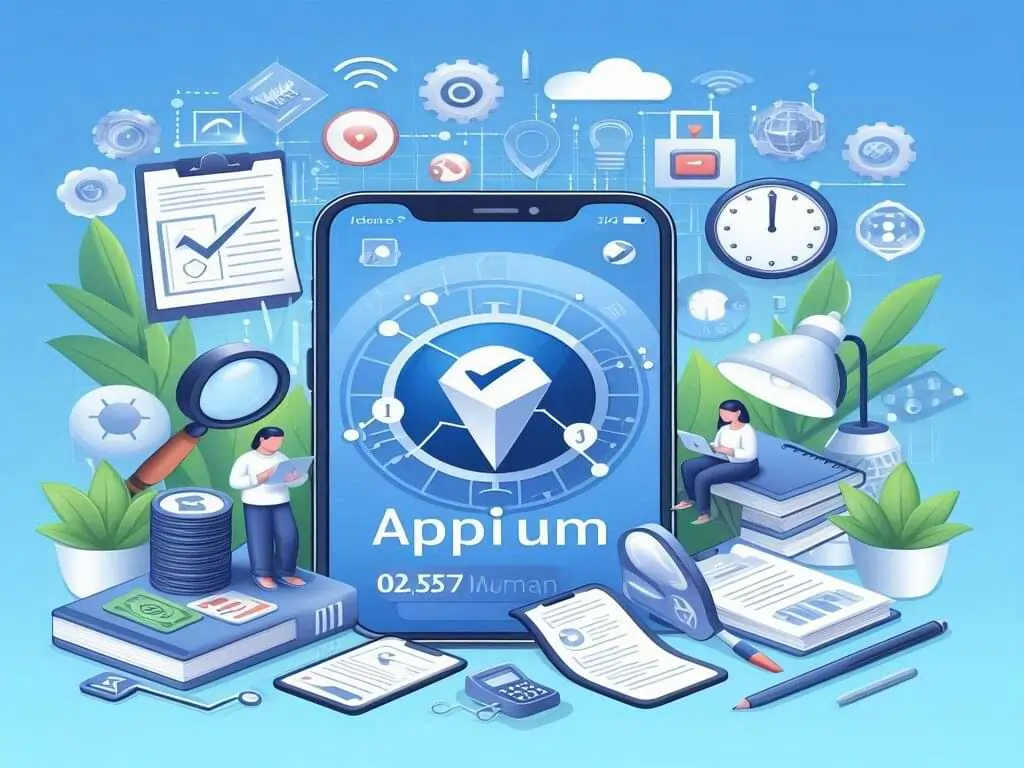Appium Mobile Testing: Essential Strategies for Success

Appium has emerged as a leading tool for mobile test automation, known for its versatility and support across multiple platforms. This open-source framework enables users to test native, hybrid, and mobile web applications seamlessly. Appium is unique in its ability to automate mobile apps from any language and using any test framework. By leveraging the WebDriver protocol, it provides full access to back-end APIs and databases, making it an ideal choice for developers and testers alike.
The simplicity of Appium’s architecture allows for easy setup and integration with existing tools. Users can utilize testing strategies that align with their development environment, supporting both iOS and Android platforms. For those looking to get started, comprehensive resources like the Appium Tutorial can guide you through the initial setup and execution of test cases.
Mobile testing with Appium not only improves the reliability of apps but also enhances testing efficiency. Whether it’s for small projects or large-scale applications, Appium’s flexibility caters to varying needs, making it an indispensable tool in the realm of mobile app testing. Explore its advanced features and strategies to unlock the full potential of mobile automation testing.
Key Takeaways
- Appium supports cross-platform mobile testing with ease.
- It integrates with various test frameworks and languages.
- Automation strategies improve app reliability and testing efficiency.
Understanding Appium

Appium is a widely used tool for mobile testing, known for its ability to handle multiple app platforms like iOS and Android. It stands out due to its flexible architecture and allows for cross-platform testing using a single API.
Core Concepts and Architecture
Appium’s core concepts are centered around the “WebDriver” protocol, which enables it to interact with apps like a real user would. This makes it different from some other mobile testing tools that require specific bindings for each platform. Unlike proprietary tools, Appium is open-source and doesn’t have the limitations often imposed by other paid solutions.
The architecture of Appium includes several key components, such as the Appium server, client, and driver. The server acts as a bridge between the user’s test code and mobile devices. A noteworthy feature is that Appium supports multiple languages, providing flexibility for testers familiar with different programming environments.
Setting up the Appium Environment
Setting up Appium involves installing the Appium server, which is a Node.js application. First, Node.js must be installed. After that, the Appium server can be set up via npm, which eases the installation process. Additionally, Appium clients for different languages can be installed. These clients allow developers to write tests in their preferred programming language.
Configuration requires setup of device-specific drivers for platforms like iOS and Android. Each driver has its prerequisites, such as the Android SDK for Android or Xcode for iOS devices. A thorough understanding of these configurations is essential to execute tests efficiently. Detailed guides and resources are available to help streamline this setup, making it easier for users to get started.
Appium Automation Strategies
Appium automation involves key strategies for effective mobile testing across platforms. Script development, design patterns like Page Object Model, and gesture handling are crucial for success.
Developing Scripts for Android and iOS
Creating test scripts for Android and iOS involves different approaches due to platform-specific features. Consistency in naming conventions and writing maintainable code are important best practices to follow.
Scripts should leverage conditional logic to handle platform differences. For Android, use accessibility IDs as selectors, while iOS benefits from XCUITest framework integration. Testing versatility can be enhanced by incorporating both physical devices and emulators. Efficient debugging practices save time and improve script reliability.
Page Object Model and Appium
The Page Object Model (POM) is a design pattern that enhances test maintainability and readability. By separating the UI implementation from test scripts, code reusability is increased.
Classes in POM represent pages, containing methods and locators for interacting with mobile apps. This structure minimizes code duplication. Adopting POM in Appium tests helps in managing locators effectively, making it easier to adapt scripts to changes in mobile applications. Using POM reduces maintenance effort as screens evolve and elements change.
Handling Different Mobile Gestures
Appium supports a wide variety of mobile gestures, crucial for realistic user-interaction testing. These include swipes, taps, scrolls, and pinches. To handle gestures effectively, testers must understand platform-specific gesture APIs.
Gesture handling can be customized by configuring parameters like duration and start/stop points. Appium’s built-in features allow testers to simulate complex user interactions across devices by adjusting gesture parameters. Properly implementing these gestures helps ensure that tests reflect actual user behavior, providing a comprehensive assessment of mobile app performance.
Appium Test Execution
Appium allows testers to run automated tests on both real mobile devices and emulators or simulators. Additionally, it supports parallel test execution, which saves time and boosts efficiency in the testing process.
Running Tests on Real Devices
Testing on real devices provides the most accurate representation of how an application will perform in users’ hands. Appium supports device-specific testing for both Android and iOS platforms.
To set up real device testing, connect the device to your computer and ensure that all required drivers and configurations are complete. This includes enabling developer options on Android or setting up provisioning profiles on iOS.
Developers gain insights into potential device-specific issues like performance bottlenecks and OS version-related bugs. This type of testing is crucial for applications intended for wider deployments across different devices and environments.
Running Tests on Emulators and Simulators
Emulators and simulators make testing convenient and cost-effective, especially when a wide range of devices is unavailable. An emulator mimics an Android device, while a simulator mimics an iOS device. These virtual environments allow for easy testing of application features without the need for actual devices.
Appium makes it simple to set up testing on emulators and simulators by using its server-client architecture to send commands and receive results. While these tools are excellent for functional testing and initial development, they may not capture device-specific issues effectively.
Developers should balance testing between real devices and virtual environments to ensure comprehensive test coverage.
Parallel Test Execution with Appium
Parallel test execution significantly reduces the time it takes to validate application functionality across multiple devices or configurations. Appium facilitates this by enabling multiple tests to run simultaneously on different devices or in various virtual environments.
Using a test grid setup like Selenium Grid or third-party cloud services, testers can distribute tests across numerous nodes. This setup not only speeds up the testing process but also allows for testing under various OS versions and device configurations at the same time.
By adopting parallel testing, teams can achieve faster feedback loops and more efficient use of resources, ensuring a more robust quality assurance process.
Advanced Appium Topics
Advanced Appium topics cover areas pivotal for enhancing automation efficiency. These include integrating Appium with continuous integration tools, harnessing cloud-based testing solutions, and contributing to the open-source Appium project.
Continuous Integration and Appium
Integrating Appium with continuous integration (CI) tools is essential for efficient testing cycles. CI tools like Jenkins, Travis CI, or CircleCI can be used to automate tests every time code changes occur. This ensures timely feedback and identifies issues early.
For seamless integration, use plugins specific to the CI tool in use. This helps in managing Appium test scripts more effectively.
Teams should configure Appium to run on various device simulators or emulators to mimic different user environments. Schedulers within CI systems can distribute test execution across multiple nodes, increasing speed and coverage. Proper setup can significantly reduce the manual effort needed for testing, leading to improved code quality.
Appium’s Cloud-Based Testing Solutions
Appium’s cloud-based testing solutions provide a flexible approach for testing on real devices. Tools like BrowserStack and Sauce Labs allow access to a variety of real devices through the cloud without the need to maintain hardware.
Cloud platforms support parallel test execution, which speeds up the testing process. This is particularly effective for applications requiring testing across different operating systems and device configurations.
Security and performance are critical considerations when using cloud-based testing. These platforms often come with robust security protocols to protect data. Connecting Appium tests with these services is usually straightforward, allowing developers to focus on refining test strategies without worrying about infrastructure management.
Contributing to the Appium Project
Contributing to the Appium project allows developers to be part of an active open-source community. There are many ways to contribute, including writing code, opening issues, or updating documentation. Developers can explore the project on its GitHub repository, where contribution guidelines are outlined.
Participating in forums and discussions is another way to contribute. Engaging with other contributors can provide insights into the project’s roadmap and help in better understanding its architecture.
By contributing, developers not only enhance their technical skills but also help shape the future direction of Appium. It’s a rewarding way to influence a tool used by testers worldwide.






